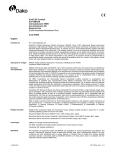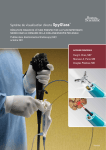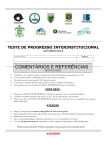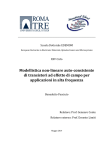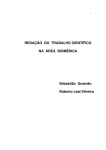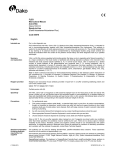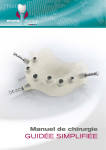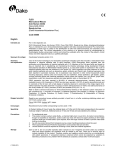Download FLEX Monoclonal Mouse Anti-Cytokeratin 17 Clone E3
Transcript
positive specimens. The recommended negative control reagent is FLEX Negative Control, Mouse, (Dako Autostainer/Autostainer Plus) (Code IS750). FLEX Monoclonal Mouse Anti-Cytokeratin 17 Clone E3 Ready-to-Use (Dako Autostainer/Autostainer Plus) Staining interpretation Cells labeled by the antibody display cytoplasmic staining. Performance characteristics Normal tissues: The antibody labels suprabasal cells of formalin-fixed esophageal epithelium (7) and basal cells of the bronchial mucosa (1). In cervix, the antibody labels endocervical reserve cells (2). In breast, the antibody labels the basal layer of breast ductal epithelium (4). In skin, the myoepithelial cells of the sweat glands show a moderate to strong cytoplasmic staining reaction, whereas the squamous epithelial cells are negative. Abnormal tissues: The antibody labeled keratinized cells in 10/22 cases of invasive carcinoma of the esophagus (7). In larynx, dysplasia and squamous cell carcinoma were labeled (8). The antibody labeled basal and suprabasal cells in basal cell hyperplasia, as well as basal, intermediate and apical cell layers in squamous cell metaplasia of the bronchial mucosa (1). In a study of cervical cancer, the antibody labeled immature squamous metaplasia as well as keratinizing and nonkeratinizing squamous cell carcinomas (2). In different pancreatic adenocarcinoma subtypes, the antibody labeled 38/46 cases of pancreatic ductal carcinoma, 5/6 cases of ampullary carcinoma of pancreatobiliary origin, 17/24 cases of intrahepatic cholangiocarcinoma, whereas only 8/184 cases of extra-pancreatobiliary nonmucinous adenocarcinoma were labeled by the antibody (3). In breast carcinoma, the antibody labeled 75/532 cases (4). Code IS620 ENGLISH Intended use For in vitro diagnostic use. FLEX Monoclonal Mouse Anti-Cytokeratin 17, Clone E3, Ready-to-Use, (Dako Autostainer/Autostainer Plus), is intended for use in immunohistochemistry together with Dako Autostainer/Autostainer Plus instruments. This antibody is useful for the identification of squamous cell carcinomas (1, 2) and for the identification of pancreatic adenocarcinomas (3) and breast carcinomas (4). The clinical interpretation of any staining or its absence should be complemented by morphological studies using proper controls and should be evaluated within the context of the patient's clinical history and other diagnostic tests by a qualified pathologist. Summary and explanation Cytokeratin 17 belongs to the intermediate filaments, which create a cytoskeleton in almost all eukaryotic cells. In contrast to other intermediate filaments, cytokeratins (CKs) are made up of a highly complex multigene family of polypeptides with molecular masses ranging from 40 to 68 kDa. CKs are generally held to belong to the most fundamental markers of epithelial differentiation, and until now, 20 distinct CK polypeptides have been revealed in various human epithelia (5). The CKs can be divided into an acidic type A (class I) and a neutral-basic type B (class II) subfamily. CK 17, a 46 kDa protein, belongs to the acidic type A subfamily, and its distribution is confined to basal and myoepithelial cells of a group of complex epithelia and transitional epithelium as well as to the outer root sheet of hair folliculi (6). Refer to Dako’s General Instructions for Immunohistochemical Staining or the detection system instructions of IHC procedures for: 1) Principle of Procedure, 2) Materials Required, Not Supplied, 3) Storage, 4) Specimen Preparation, 5) Staining Procedure, 6) Quality Control, 7) Troubleshooting, 8) Interpretation of Staining, 9) General Limitations. Reagent provided Ready-to-use monoclonal mouse antibody provided in liquid form in a buffer containing stabilizing protein and 0.015 mol/L sodium azide. Clone: E3 (6). Isotype: IgG2b, kappa. Immunogen Cytoskeletal fraction of rat colon epithelium (6). Specificity In one- and two-dimensional SDS-PAGE and immunoblotting of Triton X-100-extracted cytoskeleton preparations of several cell cultures and tissues, the antibody labeled a band corresponding to human cytokeratin 17 (6). Precautions 1. For professional users. 2. This product contains sodium azide (NaN3), a chemical highly toxic in pure form. At product concentrations, though not classified as hazardous, sodium azide may react with lead and copper plumbing to form highly explosive build-ups of metal azides. Upon disposal, flush with large volumes of water to prevent metal azide build-up in plumbing. 3. As with any product derived from biological sources, proper handling procedures should be used. 4. Wear appropriate Personal Protective Equipment to avoid contact with eyes and skin. 5. Unused solution should be disposed of according to local, State and Federal regulations. Storage Store at 2-8 °C. Do not use after expiration date sta mped on vial. If reagents are stored under any conditions other than those specified, the conditions must be verified by the user. There are no obvious signs to indicate instability of this product. Therefore, positive and negative controls should be run simultaneously with patient specimens. If unexpected staining is observed which cannot be explained by variations in laboratory procedures and a problem with the antibody is suspected, contact Dako Technical Support. Specimen preparation including materials required but not supplied The antibody can be used for labeling formalin-fixed, paraffin-embedded tissue sections. Tissue specimens should be cut into sections of approximately 4 µm. Pre-treatment with heat-induced epitope retrieval (HIER) is required using Dako PT Link (Code PT100/PT101). For details, please refer to the PT Link User Guide. Optimal results are obtained by pretreating tissues using EnVision FLEX Target Retrieval Solution, High pH (50x) (Code K8010/K8004). Paraffin-embedded sections: Pre-treatment of formalin-fixed, paraffin-embedded tissue sections is recommended using the 3-in-1 specimen preparation procedure for Dako PT Link. Follow the pre-treatment procedure outlined in the package insert for EnVision FLEX Target Retrieval Solution, High pH (50x) (Code K8010/K8004). Note: After staining the sections must be dehydrated, cleared and mounted using permanent mounting medium. Deparaffinized sections: Pre-treatment of deparaffinized formalin-fixed, paraffin-embedded tissue sections is recommended using Dako PT Link and following the same procedure as described for paraffin-embedded sections. After staining the slides should be mounted using aqueous or permanent mounting medium. The tissue sections should not dry out during the treatment or during the following immunohistochemical staining procedure. For greater adherence of tissue sections to glass slides, the use of FLEX IHC Microscope Slides (Code K8020) is recommended. Staining procedure including materials required but not supplied (115290-002) Dako Denmark A/S FRANÇAIS Utilisation prévue Pour utilisation diagnostique in vitro. FLEX Monoclonal Mouse Anti-Cytokeratin 17, clone E3, Ready-to-Use, (Dako Autostainer/Autostainer Plus), est destiné à une utilisation en immunohistochimie avec les instruments Dako Autostainer/Autostainer Plus. Cet anticorps facilite l’identification des carcinomes à cellules squameuses (1, 2) et celle des adénocarcinomes pancréatiques (3) et des carcinomes mammaires (4). L’interprétation clinique de toute coloration ou son absence doit être complétée par des études morphologiques en utilisant des contrôles appropriés et doit être évaluée en fonction des antécédents cliniques du patient et d’autres tests diagnostiques par un pathologiste qualifié. Résumé et explication La cytokératine 17 fait partie des filaments intermédiaires, qui créent un cytosquelette dans presque toutes les cellules eucaryotes. À la différence des autres filaments intermédiaires, les cytokératines (CK) sont constituées d’une famille multigénique hautement complexe de polypeptides dont les poids moléculaires varient entre 40 et 68 kDa. Les CK sont généralement perçues comme faisant partie des marqueurs les plus fondamentaux de la différenciation épithéliale, et jusqu’à présent, 20 polypeptides distincts de CK ont été mis en évidence dans différents épithéliums humains (5). Les CK peuvent être divisées en sous-familles : type A acide (classe I) et type B neutre-basique (classe II). La CK 17, une protéine de 46 kDa, appartient à la sous-famille de type A acide, et sa répartition est limitée aux cellules basales et myoépithéliales d’un groupe d’épithéliums complexes et d’épithélium transitionnel ainsi qu’à la gaine extérieure des follicules pileux (6). Se référer aux Instructions générales de coloration immunohistochimique de Dako ou aux instructions du système de détection relatives aux procédures IHC pour plus d’informations concernant les points suivants : 1) Principe de procédure, 2) Matériels requis mais non fournis, 3) Conservation, 4) Préparation des échantillons, 5) Procédure de coloration, 6) Contrôle qualité, 7) Dépannage, 8) Interprétation de la coloration, 9) Limites générales. Réactifs fournis Anticorps monoclonal de souris prêt à l’emploi fourni sous forme liquide dans un tampon contenant une protéine stabilisante et 0,015 mol/L d’azide de sodium. Clone : E3 (6). Isotype : IgG2b, kappa. Immunogène Fraction cytosquelettique d’épithélium de côlon de rat (6). Spécificité Dans les analyses PAGE en présence de SDS uni- ou bidimensionnelles et dans les immunoblots de préparations cytosquelettiques de plusieurs tissus et cultures cellulaires extraits par Triton X-100, l’anticorps marque une bande correspondant à la cytokératine 17 humaine (6). Précautions 1. Pour utilisateurs professionnels. 2. Ce produit contient de l’azide de sodium (NaN3), produit chimique hautement toxique dans sa forme pure. Aux concentrations du produit, bien que non classé comme dangereux, l’azide de sodium peut réagir avec le cuivre et le plomb des canalisations et former des accumulations d’azides métalliques hautement explosifs. Lors de l’élimination, rincer abondamment à l’eau pour éviter toute accumulation d’azide métallique dans les canalisations. 3. Comme avec tout produit d’origine biologique, des procédures de manipulation appropriées doivent être respectées. 4. Porter un vêtement de protection approprié pour éviter le contact avec les yeux et la peau. 5. Les solutions non utilisées doivent être éliminées conformément aux réglementations locales et nationales. Conservation Conserver entre 2 et 8 °C. Ne pas utiliser après la date de péremption indiquée sur le flacon. Si les réactifs sont conservés dans des conditions autres que celles indiquées, celles-ci doivent être validées par l’utilisateur. Il n’y a aucun signe évident indiquant l’instabilité de ce produit. Par conséquent, des contrôles positifs et négatifs doivent être testés en même temps que les échantillons de patient. Si une coloration inattendue est observée, qui ne peut être expliquée par un changement des procédures du laboratoire, et en cas de suspicion d’un problème lié à l’anticorps, contacter l’assistance technique de Dako. Préparation des échantillons y compris le matériel requis mais non fourni L’anticorps peut être utilisé pour le marquage des coupes de tissus inclus en paraffine et fixés au formol. L’épaisseur des coupes d’échantillons de tissu doit être d’environ 4 µm. Un prétraitement avec démasquage d’épitope induit par la chaleur (HIER) est nécessaire avec le Dako PT Link (Réf. PT100/PT101). Pour plus de détails, se référer au Guide d’utilisation du PT Link. Des résultats optimaux sont obtenus en prétraitant les tissus à l’aide de la EnVision FLEX Target Retrieval Solution, High pH (50x) (Réf. K8010/K8004). Coupes incluses en paraffine : le prétraitement des coupes tissulaires fixées au formol et incluses en paraffine est recommandé à l'aide de la procédure de préparation d'échantillon 3-en-un pour le Dako PT Link. Suivre la procédure de prétraitement indiquée dans la notice de la EnVision FLEX Target Retrieval Solution, High pH (50x) (Réf. K8010/K8004). Remarque : après coloration, les coupes doivent être déshydratées, lavées et montées à l’aide d’un milieu de montage permanent. Coupes déparaffinées : le prétraitement des coupes tissulaires déparaffinées, fixées au formol et incluses en paraffine, est recommandé à l’aide du Dako PT Link, en suivant la même procédure que pour les coupes incluses en paraffine. Après coloration, un montage aqueux ou permanent des lames est recommandé. Les coupes de tissus ne doivent pas sécher lors du traitement ni lors de la procédure de coloration immunohistochimique suivante. Pour une meilleure adhérence des coupes de tissus sur les lames de verre, il est recommandé d’utiliser des lames FLEX IHC Microscope Slides (Réf. K8020). Procédure de coloration y compris le matériel requis mais non fourni Le système de visualisation recommandé est le EnVision FLEX, High pH, (Dako Autostainer/Autostainer Plus) (Réf. K8010). Les étapes de coloration et d’incubation sont préprogrammées dans le logiciel des instruments Dako Autostainer/Autostainer Plus, à l’aide des protocoles suivants : Protocole modèle : FLEXRTU2 (volume de distribution de 200 µL) ou FLEXRTU3 (volume de distribution de 300 µL) Autoprogram : CK17 (sans contre-coloration) ou CK17H (avec contre-coloration) The recommended visualization system is EnVision FLEX, High pH, (Dako Autostainer/Autostainer Plus) (Code K8010). The staining steps and incubation times are pre-programmed into the software of Dako Autostainer/Autostainer Plus instruments, using the following protocols: Template protocol: FLEXRTU2 (200 µL dispense volume) or FLEXRTU3 (300 µL dispense volume) Autoprogram: CK17 (without counterstaining) or CK17H (with counterstaining) The Auxiliary step should be set to “rinse buffer” in staining runs with ≤10 slides. For staining runs with >10 slides the Auxiliary step should be set to “none”. This ascertains comparable wash times. All incubation steps should be performed at room temperature. For details, please refer to the Operator’s Manual for the dedicated instrument. If the protocols are not available on the used Dako Autostainer instrument, please contact Dako Technical Services. Optimal conditions may vary depending on specimen and preparation methods, and should be determined by each individual laboratory. If the evaluating pathologist should desire a different staining intensity, a Dako Application Specialist/Technical Service Specialist can be contacted for information on re-programming of the protocol. Verify that the performance of the adjusted protocol is still valid by evaluating that the staining pattern is identical to the staining pattern described in “Performance characteristics”. Counterstaining in hematoxylin is recommended using EnVision FLEX Hematoxylin, (Dako Autostainer/Autostainer Plus) (Code K8018). Non-aqueous, permanent mounting medium is recommended. Positive and negative controls should be run simultaneously using the same protocol as the patient specimens. The positive control tissue should include skin and the cells/structures should display reaction patterns as described for this tissue in “Performance characteristics” in all IS620/EFG/MNI/2009.12.04 p. 1/4 | Produktionsvej 42 | DK-2600 Glostrup | Denmark | Tel. +45 44 85 95 00 | Fax +45 44 85 95 95 | CVR No. 33 21 13 17 L’étape Auxiliary doit être réglée sur « rinse buffer » lors des cycles de coloration avec ≤10 lames. Pour les cycles de coloration de >10 lames, l’étape Auxiliary doit être réglée sur « none ». Toutes les étapes d’incubation doivent être effectuées à température ambiante. Pour plus de détails, se référer au Manuel de l’opérateur (115290-002) Dako Denmark A/S IS620/EFG/MNI/2009.12.04 p. 2/4 | Produktionsvej 42 | DK-2600 Glostrup | Denmark | Tel. +45 44 85 95 00 | Fax +45 44 85 95 95 | CVR No. 33 21 13 17 spécifique à l'instrument. Si les protocoles ne sont pas disponibles sur l’instrument Dako Autostainer utilisé, contacter le service technique de Dako. Les conditions optimales peuvent varier en fonction du prélèvement et des méthodes de préparation, et doivent être déterminées par chaque laboratoire individuellement. Si le pathologiste qui réalise l’évaluation désire une intensité de coloration différente, un spécialiste d’application/spécialiste du service technique de Dako peut être contacté pour obtenir des informations sur la re-programmation du protocole. Vérifier que l'exécution du protocole modifié est toujours valide en vérifiant que le schéma de coloration est identique au schéma de coloration décrit dans les « Caractéristiques de performance ». Die Gewebeschnitte dürfen während der Behandlung oder des anschließenden immunhistochemischen Färbeverfahrens nicht austrocknen. Zur besseren Haftung der Gewebeschnitte an den Glasobjektträgern wird die Verwendung von FLEX IHC Microscope Slides (Code-Nr. K8020) empfohlen. Färbeverfahren und erforderliche, aber nicht mitgelieferte Materialien Das empfohlene Visualisierungssystem ist EnVision™ FLEX, High pH, (Dako Autostainer/Autostainer Plus) (Code-Nr. K8010). Die Färbeschritte und Inkubationszeiten sind in der Software der Dako Autostainer/Autostainer Plus-Geräte mit den folgenden Protokollen vorprogrammiert: Matrix-Protokoll: FLEXRTU2 (200 µL Abgabevolumen) oder FLEXRTU3 (300 µL Abgabevolumen) Autoprogram: CK17 (ohne Gegenfärbung) oder CK17H (mit Gegenfärbung) Bei Färbedurchläufen mit höchstens 10 Objektträgern sollte der „Zusatz“-Schritt auf „Pufferspülgang“ eingestellt werden. Für Färbedurchläufe mit mehr als 10 Objektträgern den „Zusatz“-Schritt auf „Keine“ einstellen. Dieses gewährleistet vergleichbare Waschzeiten. Alle Inkubationsschritte sollten bei Raumtemperatur durchgeführt werden. Nähere Einzelheiten bitte dem Benutzerhandbuch für das jeweilige Gerät entnehmen. Wenn die Färbeprotokolle auf dem verwendeten Dako Autostainer-Gerät nicht verfügbar sind, bitte den Technischen Kundendienst von Dako verständigen. Optimale Bedingungen können je nach Probe und Präparationsverfahren unterschiedlich sein und sollten vom jeweiligen Labor selbst ermittelt werden. Falls der beurteilende Pathologe eine andere Färbungsintensität wünscht, kann ein Anwendungsspezialist oder Kundendiensttechniker von Dako bei der Neuprogrammierung des Protokolls helfen. Die Leistung des angepassten Protokolls muss verifiziert werden, indem gewährleistet wird, dass das Färbemuster mit dem unter „Leistungsmerkmale“ beschriebenen Färbemuster identisch ist. Die Gegenfärbung in Hämatoxylin sollte mit EnVision™ FLEX Hematoxylin, (Dako Autostainer/Autostainer Plus) (Code-Nr. K8018) ausgeführt werden. Empfohlen wird ein nichtwässriges, permanentes Fixiermittel. Positiv- und Negativkontrollen sollten zur gleichen Zeit und mit demselben Protokoll wie die Patientenproben getestet werden. Das positive Kontrollgewebe muss Hautgewebe enthalten, und die Zellen/Strukturen müssen in allen positiven Proben die für dieses Gewebe unter „Leistungsmerkmale“ beschriebenen Reaktionsmuster aufweisen. Das empfohlene Negativ-Kontrollreagenz ist FLEX Negative Control, Mouse, (Dako Autostainer/Autostainer Plus) (Code-Nr. IS750). Auswertung der Färbung Mit diesem Antikörper markierte Zellen weisen ein zytoplasmatisches Färbemuster auf. Leistungsmerkmale Gesundes Gewebe: Der Antikörper markiert suprabasale Zellen von formalinfixiertem Speiseröhrenepithel (7) und basale Zellen der Bronchialmukosa (1). In der Zervix markiert der Antikörper endozervikale Reservezellen (2). In der Brust markiert der Antikörper die Basalschicht des Duktusepithels der Brust (4). In der Haut weisen die Myoepithelzellen der Schweißdrüsen eine mäßige bis starke zytoplasmatische Färbereaktion auf, während die Plattenepithelzellen negativ sind. Pathologisches Gewebe: In 10 von 22 Fällen von invasivem Karzinom der Speiseröhre markierte der Antikörper auch keratinisierte Zellen (7). Im Larynx wurden Dysplasie und Plattenepithelzellkarzinom markiert (8). Zudem markierte der Antikörper basale und suprabasale Zellen in der Basalzellenhyperplasie sowie basale, intermediäre und apikale Zellschichten in der Plattenepithelzellmetaplasie der Bronchialmukosa (1). In einer Studie über Zervixkarzinome markierte der Antikörper unreife Plattenepithelzellmetaplasie sowie keratinisierende und nicht keratinisierende Plattenepithelkarzinome (2). In verschiedenen Untertypen des Pankreas-Adenokarzinoms markierte der Antikörper 38 von 46 Fällen von Duktuskarzinomen des Pankreas, 5 von 6 Fällen von Papillenkarzinomen aus Gallengang/Pankreas, 17 von 24 Fällen von intrahepatischen Cholangiokarzinomen, während nur 8 von 184 Fällen von nichtmuzinösen Adenokarzinomen außerhalb von Gallengang/Pankreas vom Antikörper markiert wurden (3). In Mammakarzinomen markierte der Antikörper 75 von 532 Fällen (4). Il est recommandé d’effectuer une contre-coloration à l’aide de EnVision FLEX Hematoxylin, (Link) (Réf. K8008). L’utilisation d’un milieu de montage permanent non aqueux est recommandée. Des contrôles positifs et négatifs doivent être réalisés en même temps et avec le même protocole que les échantillons du patient. Le contrôle de tissu positif doit comprendre la peau et les cellules/structures doivent présenter des schémas de réaction tels que décrits pour ces tissus dans les « Caractéristiques de performance » pour tous les échantillons positifs. Le contrôle négatif recommandé est le FLEX Negative Control, Mouse, (Link) (Réf. IR750). Interprétation de la coloration Les cellules marquées par l’anticorps présentent une coloration cytoplasmique. Caractéristiques de performance Tissus sains : L’anticorps marque les cellules suprabasales de l’épithélium de l’œsophage fixé au formol (7) et les cellules basales de la muqueuse bronchique (1). Au niveau du col de l’utérus, l’anticorps marque les cellules de réserve de l’endocol (2). Dans le sein, l’anticorps marque la couche basale de l’épithélium canalaire (4). Au niveau de la peau, les cellules myoépithéliales des glandes sudoripares présentent une coloration cytoplasmique modérée à forte, tandis que les cellules épithéliales squameuses sont négatives. Tissus tumoraux : L’anticorps a marqué des cellules kératinisées dans 10 cas sur 22 de carcinome invasif de l’œsophage (7). Dans le larynx, une dysplasie et un carcinome à cellules squameuses ont été marqués (8). L’anticorps a marqué les cellules basales et suprabasales dans l’hyperplasie cellulaire basale, ainsi que dans les couches de cellules basales, intermédiaires et apicales dans les métaplasies à cellules squameuses de la muqueuse bronchique (1). Dans une étude portant sur le cancer du col de l’utérus, l’anticorps a marqué une métaplasie squameuse immature ainsi que des carcinomes à cellules squameuses kératinisés et non kératinisés (2). Dans différents sous-types d’adénocarcinome pancréatique, l’anticorps a marqué 38 cas sur 46 de carcinome du canal pancréatique, 5 cas sur 6 de carcinome ampullaire d’origine pancréato-biliaire, 17 cas sur 24 de cholangiocarcinome intrahépatique, alors que seuls 8 cas sur 184 d’adénocarcinome non mucineux extra-pancréato-biliaire étaient marqués par l’anticorps (3). Dans le carcinome mammaire, l’anticorps a marqué 75 cas sur 532 (4). DEUTSCH Zweckbestimmung Zur In-vitro-Diagnostik. FLEX Monoclonal Mouse Anti-Human Cytokeratin 17, Clone E3, Ready-to-Use, (Dako Autostainer/Autostainer Plus) ist zur Verwendung in der Immunhistochemie in Verbindung mit Dako Autostainer/Autostainer Plus-Geräten bestimmt. Dieser Antikörper dient zur Erkennung von Plattenepithelkarzinomen (1, 2) und Adenokarzinomen des Pankreas (3) sowie von Brustkarzinomen (4). Die klinische Auswertung einer eventuell eintretenden Färbung sollte durch morphologische Studien mit geeigneten Kontrollen ergänzt werden und von einem qualifizierten Pathologen unter Berücksichtigung der Krankengeschichte und anderer diagnostischer Tests des Patienten vorgenommen werden. Zusammenfassung und Erklärung Cytokeratin 17 gehört zu den Intermediärfilamenten, die in fast allen eukaryotischen Zellen ein Zytoskelett bilden. Im Gegensatz zu anderen Intermediärfilamenten bestehen Zytokeratine (ZK) aus einer hochkomplexen multigenen Familie von Polypeptiden, deren Molekulargewicht von 40 bis 68 kDa reicht. ZK werden zu den wichtigsten Markern für epitheliale Differenzierung gezählt. Bisher wurden 20 distinktive ZKPolypeptide in verschiedenen menschlichen Epithelen entdeckt (5). Die ZK lassen sich in einen sauren Typ A (Klasse I) und einen neutralbasischen Typ B (Klasse II) unterteilen. CK 17 ist ein Protein mit 46 kDa und gehört zur sauren Unterfamilie vom Typ A und seine Verteilung beschränkt sich auf basale und Myoepithelzellen aus einer Gruppe komplexer Epithelien und dem Übergangsepithel sowie aus dem ORS von Haarfollikeln (6). Folgende Angaben bitte den Allgemeinen Richtlinien zur immunhistochemischen Färbung von Dako oder den Anweisungen des Detektionssystems für IHC-Verfahren entnehmen: 1) Verfahrensprinzip, 2) Erforderliche, aber nicht mitgelieferte Materialien, 3) Aufbewahrung, 4) Vorbereitung der Probe, 5) Färbeverfahren, 6) Qualitätskontrolle, 7) Fehlersuche und -behebung, 8) Auswertung der Färbung, 9) Allgemeine Beschränkungen. Geliefertes Reagenz Gebrauchsfertiger, monoklonaler Maus-Antikörper in flüssiger Form in einem Puffer, der stabilisierendes Protein und 0,015 mol/L Natriumazid enthält. Klon: E3 (6). Isotyp: IgG2b, Kappa. Immunogen Zytoskelettfraktion aus dem Dickdarmepithel von Ratten (6). Spezifität Beim ein- und zweidimensionalen SDS-PAGE und Immunblotting der Triton X-100-extrahierten Zellskelettpräparate mehrerer Zellkulturen und Gewebe markierte der Antikörper eine Cytokeratin 17 entsprechende Bande (6). Vorsichtsmaßnahmen 1. Nur für Fachpersonal bestimmt. 2. Dieses Produkt enthält Natriumazid (NaN3), eine in reiner Form äußerst giftige Chemikalie. Natriumazid kann auch in als ungefährlich eingestuften Konzentrationen mit Blei- und Kupferrohren reagieren und hochexplosive Metallazide bilden. Nach der Entsorgung stets mit viel Wasser nachspülen, um Metallazidansammlungen in den Leitungen vorzubeugen. 3. Wie alle Produkte biologischen Ursprungs müssen auch diese entsprechend gehandhabt werden. 4. Geeignete Schutzkleidung tragen, um Augen- und Hautkontakt zu vermeiden. 5. Nicht verwendete Lösung ist entsprechend örtlichen, bundesstaatlichen und staatlichen Richtlinien zu entsorgen. Lagerung Dako Denmark A/S 1. Fisseler-Eckhoff A, Erfkamp S, Müller K-M. Cytokeratin expression in preneoplastic lesions and early squamous cell carcinoma of the bronchi. Path Res Pract 1996: 92:552-559. 2. Smedts F, Ramaekers F, Link M, Lauerova L, Troyanovsky S, Schijf C, Vooijs G P. Detection of keratin subtypes in routinely processed cervical tissue: implications for tumour classification and the study of cervix cancer aetiology. Virchows Archiv 1994:425:145-155. 3. Chu P G, Schwarz R E, Lau S K, Yen Y, Weiss L M. Immunohistochemical staining in the diagnosis of pancreatobiliary and Ampulla of Vater adenocarcinoma. Am J Surg Pathol 2005:29:359-367. 4. van de Rijn M, Perou C M, Tibshirani R, Haas P, Kallioniemi O, Kononen J, Torhost J, et al. Expression of cytokeratins 17 and 5 indentifies a group of breast carcinomas with poor clinical outcome. Am J Pathol 2002:161:1991-1996. 5. Moll R. Cytokeratins as markers of differentiation in the diagnosis of epithelial tumors. In: Hermann, Harris, editors. Subcellular Biochemistry. Volume 31, New York: Plenum Press; 1998. p. 205-62. 6. Troyanovsky SM, Guelstein VI, Tchipysheva TA, Krutovskikh VA, Bannikov GA. Patterns of expression of keratin 17 in human epithelia: dependency on cell position. J Cell Sci 1989;93:419-26. 7. Takahashi H, Shikata N, Senzaki H, Shintaku M, Tsubura A. Immunohistochemical staining patterns of keratins in normal oesophageal epithelium and carcinoma of the oesophagus. Histopathology 1995;26:4 8. Cohen-Kerem R, Madah W, Sabo E, Rahat M A, Greenberg E, Elmalah I. Cytokeratin-17 as a potential marker for squamous cell carcinoma of the larynx. Ann Otol Laryngol 2004:113:821-827. Explanation of symbols/ Explication des symboles/ Erläuterung der Symbole Bei 2–8 °C aufbewahren. Nach Ablauf des auf dem Fläsch chen aufgedruckten Verfalldatums nicht mehr verwenden. Werden die Reagenzien unter anderen als den angegebenen Bedingungen aufbewahrt, müssen diese Bedingungen vom Benutzer validiert werden. Es gibt keine offensichtlichen Anzeichen für eine eventuelle Produktinstabilität. Positiv- und Negativkontrollen sollten daher zur gleichen Zeit wie die Patientenproben getestet werden. Falls es zu einer unerwarteten Färbung kommt, die sich nicht durch Unterschiede bei Laborverfahren erklären lässt und auf ein Problem mit dem Antikörper hindeutet, ist der technische Kundendienst von Dako zu verständigen. Vorbereitung der Probe und erforderliche, aber nicht mitgelieferte Materialien (115290-002) References/ Références/ Literatur Der Antikörper eignet sich zur Markierung von formalinfixierten und paraffineingebetteten Gewebeschnitten. Gewebeproben sollten in Schnitte von ca. 4 µm Stärke geschnitten werden. Die Vorbehandlung durch hitzeinduzierte Epitopdemaskierung (HIER) mit Dako PT Link (Code-Nr. PT100/PT101) ist erforderlich. Weitere Informationen hierzu siehe PT Link-Benutzerhandbuch. Optimale Ergebnisse können durch Vorbehandlung der Gewebe mit EnVision FLEX Target Retrieval Solution, High pH (50x) (Code-Nr. K8010/K8004) erzielt werden. Paraffineingebettete Schnitte: Die Vorbehandlung der formalinfixierten, paraffineingebetteten Schnitte mit dem 3-in-1Probenvorbereitungsverfahren für Dako PT Link wird empfohlen. Vorbehandlung gemäß der Beschreibung in der Packungsbeilage für EnVision FLEX Target Retrieval Solution, High pH (50x) (Code-Nr. K8010/K8004) durchführen. Hinweis: Nach dem Färben müssen die Schnitte dehydriert, geklärt und mit permanentem Einbettmedium auf den Objektträger aufgebracht werden. Entparaffinierte Schnitte: Eine Vorbehandlung der entparaffinierten, formalinfixierten, paraffineingebetteten Gewebeschnitte mit Dako PT Link nach demselben Verfahren, wie für die paraffineingebetteten Schnitte beschrieben, wird empfohlen. Die Objektträger nach dem Färben mit einem wässrigen oder permanenten Einbettmedium bedecken. IS620/EFG/MNI/2009.12.04 p. 3/4 | Produktionsvej 42 | DK-2600 Glostrup | Denmark | Tel. +45 44 85 95 00 | Fax +45 44 85 95 95 | CVR No. 33 21 13 17 Catalogue number Référence catalogue Bestellnummer Temperature limitation Limites de température Use by Utiliser avant Zulässiger Temperaturbereich Verwendbar bis In vitro diagnostic medical device Dispositif médical de diagnostic in vitro In-vitro-Diagnostikum Contains sufficient for <n> tests Contenu suffisant pour <n> tests Manufacturer Fabricant Inhalt ausreichend für <n> Tests Hersteller Consult instructions for use Voir les instructions d’utilisation Gebrauchsanweisung beachten Batch code Numéro de lot (115290-002) Dako Denmark A/S Chargenbezeichnung IS620/EFG/MNI/2009.12.04 p. 4/4 | Produktionsvej 42 | DK-2600 Glostrup | Denmark | Tel. +45 44 85 95 00 | Fax +45 44 85 95 95 | CVR No. 33 21 13 17


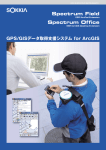

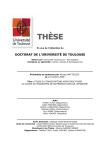
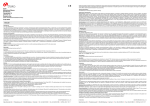


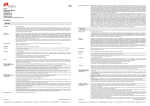
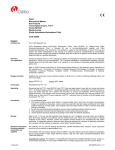

![hl-2-1300p_2007-12(7) [igg ief].qxp](http://vs1.manualzilla.com/store/data/006137619_1-26e8762877f1faf64ab49404d6bc071f-150x150.png)

